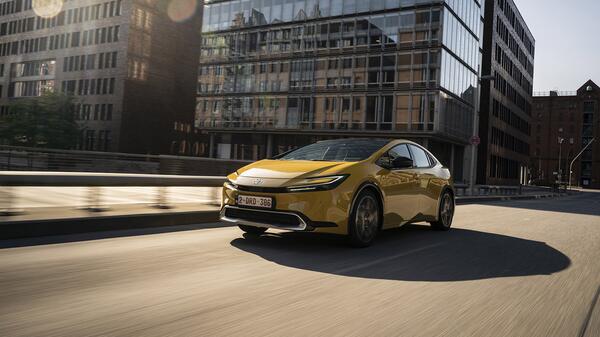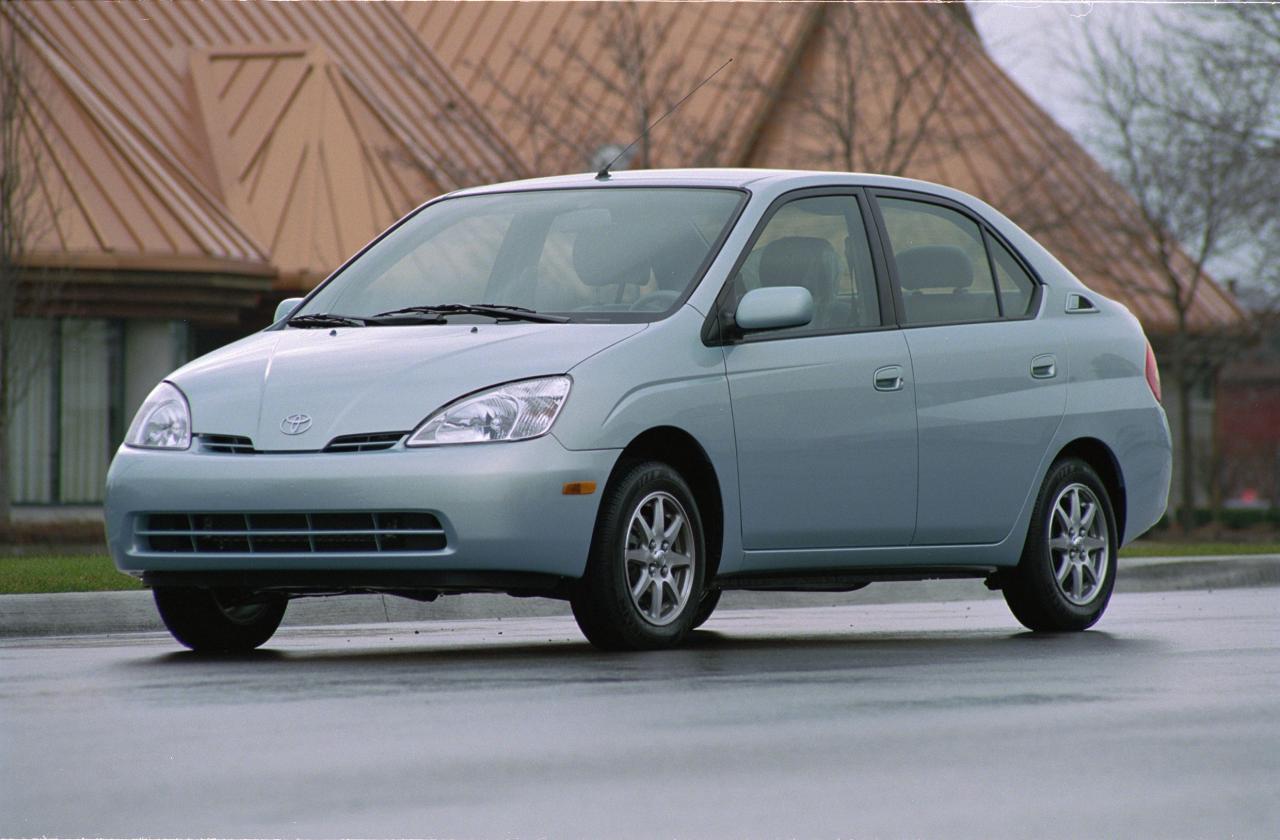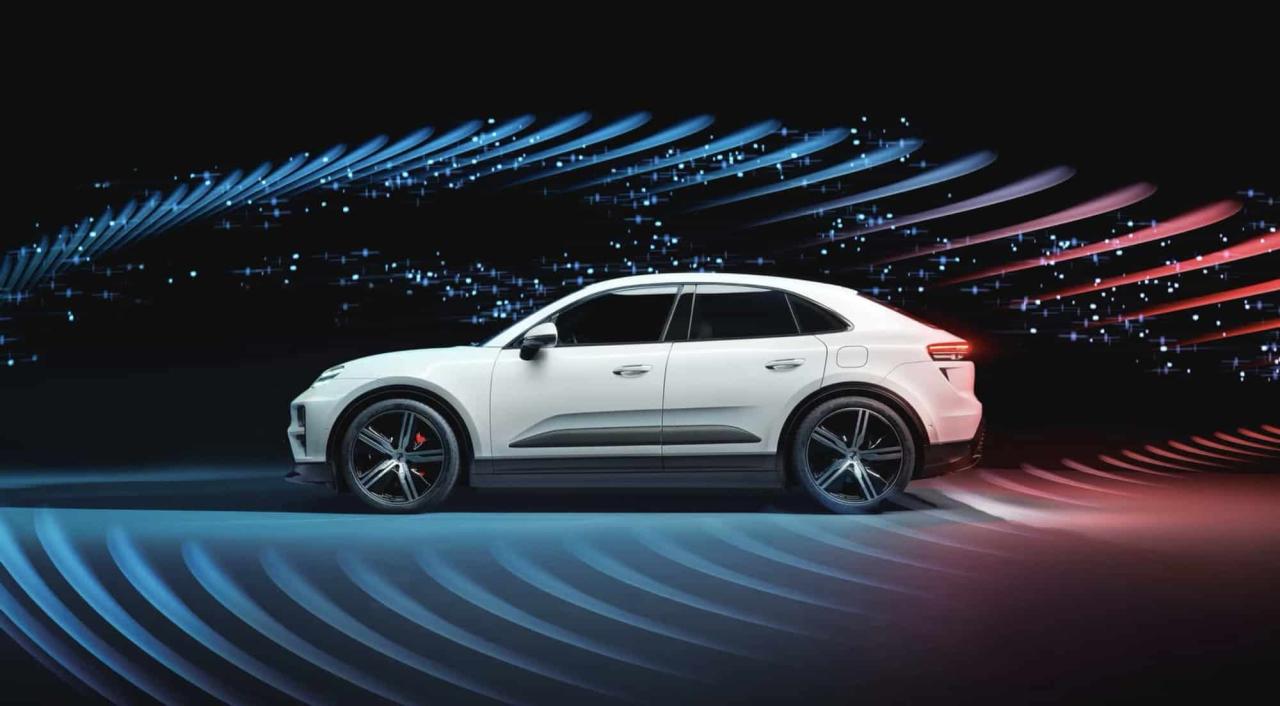
In today’s economic climate where every dollar counts, drivers across the nation are discovering a powerful secret to slashing their annual transportation expenses. Hybrid sedans have emerged not merely as environmentally conscious choices, but as formidable financial instruments capable of delivering thousands of dollars in yearly savings. This comprehensive analysis reveals how these technologically advanced vehicles transform the economics of personal transportation while delivering exceptional value to savvy consumers.
The automotive landscape has undergone a dramatic transformation over the past decade. What once seemed like a futuristic concept has become mainstream reality, with hybrid sedans now representing one of the fastest-growing segments in the automotive market. Understanding the financial implications of this shift is crucial for anyone considering their next vehicle purchase.
Understanding the True Cost of Vehicle Ownership
Before diving into the specific savings hybrid sedans provide, it’s essential to understand the complete picture of vehicle ownership costs. Many consumers focus solely on the sticker price when purchasing a vehicle, but this represents just the tip of the financial iceberg.
The total cost of ownership encompasses multiple factors that directly impact your wallet. Fuel expenses typically rank as the largest ongoing cost for most drivers, followed closely by insurance premiums, maintenance requirements, and depreciation. Additionally, factors such as registration fees, parking costs, and potential tax incentives play significant roles in the overall financial equation.
Traditional gasoline-powered sedans, while often cheaper upfront, accumulate substantially higher operational costs throughout their lifespan. The average American driver covers approximately fifteen thousand miles annually, and at current fuel prices, this translates to significant expenditure. When you factor in the volatility of gasoline prices and the increasing frequency of price spikes, the financial unpredictability becomes even more pronounced.
Breaking Down the Numbers: Fuel Savings Explained

The primary advantage of hybrid sedans lies in their exceptional fuel efficiency. Modern hybrid technology combines a traditional internal combustion engine with an electric motor and battery system, creating a synergistic powertrain that maximizes efficiency while minimizing waste.
Consider the mathematical reality of this efficiency advantage. A conventional midsize sedan typically achieves around twenty-eight miles per gallon in combined city and highway driving. In contrast, popular hybrid sedans routinely deliver between forty-five and fifty-five miles per gallon under similar conditions. This dramatic difference in fuel consumption creates immediate and substantial savings.
For a driver covering fifteen thousand miles annually, a conventional sedan consuming fuel at twenty-eight miles per gallon would require approximately five hundred thirty-six gallons of gasoline yearly. At an average national price of three dollars and fifty cents per gallon, this amounts to roughly one thousand eight hundred seventy-six dollars in annual fuel costs.
Now examine the same scenario with a hybrid sedan achieving fifty miles per gallon. That same fifteen thousand miles would require only three hundred gallons of fuel, costing approximately one thousand fifty dollars annually. The difference represents an immediate saving of over eight hundred dollars per year on fuel alone.
Beyond Fuel: Comprehensive Cost Analysis
While fuel savings represent the most obvious financial benefit, hybrid sedans deliver additional economic advantages that amplify their value proposition. Understanding these supplementary savings reveals the true extent of potential annual savings.
A. Maintenance Cost Advantages
Hybrid vehicles incorporate regenerative braking systems that capture energy during deceleration and convert it back into electrical power. This innovative technology significantly reduces wear on traditional brake components. Brake pads and rotors last considerably longer in hybrid vehicles, often doubling or tripling their lifespan compared to conventional vehicles.
The extended brake component life translates to fewer replacement cycles and reduced maintenance expenses. Over the lifetime of vehicle ownership, this alone can save hundreds or even thousands of dollars. Additionally, many hybrid systems experience less stress on engine components due to the electric motor sharing the workload during acceleration and low-speed operation.
B. Tax Incentives and Government Benefits
Federal and state governments actively encourage hybrid vehicle adoption through various financial incentives. While these programs vary by location and change over time, they represent substantial potential savings for hybrid sedan purchasers.
Federal tax credits have historically offered up to several thousand dollars for qualifying hybrid and electric vehicles. Many states supplement these federal incentives with their own programs, including additional tax credits, rebates, and reduced registration fees. Some regions even provide non-monetary benefits such as access to carpool lanes regardless of passenger count, reduced toll rates, and preferred parking locations.
Researching available incentives in your specific area before purchase can reveal surprising opportunities for additional savings. These incentives effectively reduce the purchase price, shortening the payback period and accelerating your return on investment.
C. Insurance Considerations
Insurance costs represent another significant component of vehicle ownership expenses. The relationship between hybrid vehicles and insurance premiums varies among providers and depends on multiple factors including vehicle model, safety ratings, and theft statistics.
Many insurance companies offer specific discounts for hybrid vehicle owners, recognizing both the environmental consciousness of these drivers and the typically lower risk profiles associated with hybrid owners. These discounts can range from five to ten percent of total premium costs, translating to several hundred dollars in annual savings.
Furthermore, the advanced safety features commonly included in modern hybrid sedans often qualify for additional insurance discounts. Features such as automatic emergency braking, lane departure warning, and adaptive cruise control reduce accident likelihood and severity, leading insurance companies to reward these safety enhancements with lower premiums.
Real-World Examples: Popular Hybrid Sedans

Examining specific hybrid sedan models provides concrete context for understanding potential savings. Several manufacturers have established strong reputations in the hybrid sedan market, each offering unique advantages.
A. Toyota Camry Hybrid
The Toyota Camry Hybrid stands as one of the best-selling hybrid sedans in America, combining proven reliability with impressive efficiency. This vehicle consistently achieves combined fuel economy ratings exceeding fifty miles per gallon, while offering spacious interior accommodations and refined driving dynamics.
Owners report exceptional long-term reliability, with many vehicles exceeding two hundred thousand miles with minimal issues. This longevity amplifies the financial benefits, as the per-mile cost of ownership decreases substantially over extended ownership periods.
B. Honda Accord Hybrid
Honda’s Accord Hybrid represents another compelling option in the midsize hybrid sedan category. Known for engaging driving characteristics that belie its efficiency focus, the Accord Hybrid delivers both performance and economy.
The latest generation achieves remarkable fuel economy figures while providing ample power for confident highway merging and passing. Owners appreciate the seamless integration of hybrid technology, with many reporting that the system operates so smoothly they forget they’re driving a hybrid.
C. Hyundai Sonata Hybrid
The Hyundai Sonata Hybrid offers exceptional value through its combination of competitive pricing, comprehensive warranty coverage, and impressive feature content. Hyundai includes advanced technology and safety features as standard equipment that competitors often reserve for higher trim levels.
The extensive warranty coverage provides additional peace of mind and can reduce long-term ownership costs by covering potential repairs that would otherwise require out-of-pocket expenses. This warranty advantage represents another form of financial protection that enhances the overall value proposition.
Calculating Your Personal Savings Potential
Every driver’s situation differs based on factors including annual mileage, local fuel prices, driving patterns, and available incentives. Calculating your specific potential savings requires honest assessment of your current driving costs and circumstances.
Start by documenting your current annual fuel expenditure. Review credit card statements or receipts to determine exactly how much you spend on gasoline yearly. Then calculate your average fuel economy by dividing total miles driven by total gallons purchased. This establishes your baseline fuel cost.
Next, research hybrid sedans that interest you and note their EPA fuel economy ratings. Be realistic and consider that real-world results typically fall slightly below EPA estimates. Calculate your projected fuel costs using the hybrid’s fuel economy figures and your annual mileage.
The difference between your current fuel costs and projected hybrid fuel costs represents your annual fuel savings. Add any applicable tax incentives, insurance discounts, and estimated maintenance savings to arrive at your total first-year savings. Remember that fuel and maintenance savings continue annually throughout your ownership period.
Environmental Benefits with Financial Rewards
While financial considerations often dominate vehicle purchase decisions, the environmental advantages of hybrid sedans deserve recognition. Fortunately, these environmental benefits align perfectly with economic advantages, creating a situation where doing good for the planet also benefits your wallet.
Reduced fuel consumption directly translates to lower carbon emissions. Hybrid sedans typically produce thirty to fifty percent less carbon dioxide compared to equivalent conventional vehicles. This reduction in greenhouse gas emissions contributes meaningfully to combating climate change while simultaneously reducing your fuel expenses.
Many corporations and organizations now recognize employee environmental efforts through various programs. Some employers offer preferred parking for fuel-efficient vehicles, subsidized charging stations, or even direct financial incentives for choosing environmentally responsible transportation. These programs create additional savings opportunities beyond the direct operational costs.
Long-Term Value Retention
Vehicle depreciation represents one of the largest costs of ownership, though it often receives less attention than ongoing expenses like fuel and insurance. Understanding how hybrid sedans perform in the used vehicle market provides important insight into their long-term financial value.
Hybrid vehicles have demonstrated strong resale value performance, often retaining higher percentages of their original purchase price compared to conventional counterparts. This trend reflects growing consumer demand for fuel-efficient vehicles and recognition of hybrid technology’s proven reliability.
Strong resale values benefit owners in multiple ways. If you sell or trade the vehicle, higher resale value directly returns more money to your pocket. If you keep the vehicle long-term, strong residual values indicate market confidence in the vehicle’s longevity and continued functionality, suggesting lower risk of catastrophic failures that could destroy remaining value.
Addressing Common Concerns and Misconceptions
Despite overwhelming evidence supporting hybrid sedan financial benefits, several persistent misconceptions continue influencing consumer perceptions. Addressing these concerns directly helps potential buyers make informed decisions.
A. Battery Replacement Costs
Perhaps the most common concern involves hybrid battery replacement expenses. Many consumers worry about facing enormous battery replacement costs that could eliminate all accumulated savings. However, real-world data tells a different story.
Modern hybrid batteries demonstrate remarkable durability, with most lasting the entire vehicle lifespan without requiring replacement. Manufacturers typically warrant hybrid batteries for eight years or one hundred thousand miles minimum, with many states requiring extended ten-year or one hundred fifty thousand mile coverage.
When battery replacement does become necessary, costs have declined substantially as technology matures and production scales increase. Furthermore, many third-party options and remanufactured batteries provide cost-effective alternatives to dealer replacements.
B. Performance Compromises
Another misconception suggests hybrid sedans sacrifice performance for efficiency. Modern hybrid technology thoroughly debunks this myth. Contemporary hybrid sedans deliver brisk acceleration thanks to electric motors providing instant torque that supplements gasoline engine power.
Many hybrid sedans actually outperform their conventional counterparts in acceleration tests while delivering superior fuel economy. The electric motor fills power gaps during transmission shifts and provides boost during acceleration, creating smooth, responsive performance that many drivers prefer over conventional powertrains.
C. Higher Purchase Prices
Hybrid sedans typically carry higher manufacturer’s suggested retail prices compared to equivalent conventional models. This price premium creates hesitation among budget-conscious consumers. However, examining total cost of ownership rather than purchase price alone reveals the complete financial picture.
The initial price premium often amounts to two to three thousand dollars. Given the annual savings potential of one thousand to two thousand dollars through reduced fuel costs alone, the payback period often falls within two to three years. Every year of ownership beyond the payback period represents pure financial gain.
Additionally, the previously mentioned tax incentives can reduce or eliminate the purchase price premium entirely, making hybrid sedans financially competitive from day one.
Future-Proofing Your Investment
The automotive industry continues evolving rapidly toward electrification. Understanding this trajectory helps inform current purchase decisions and protects your investment’s long-term value.
Governments worldwide have announced aggressive timelines for phasing out pure gasoline vehicle sales. Many jurisdictions plan to ban new internal combustion engine vehicle sales within the next ten to fifteen years. This regulatory shift will accelerate hybrid and electric vehicle adoption, likely increasing demand for used hybrid vehicles and supporting strong resale values.
Furthermore, infrastructure development continues expanding to support electrified vehicles. Charging stations proliferate in urban areas, workplaces, and along highways. This infrastructure growth makes hybrid and electric vehicles increasingly practical for more drivers, broadening the potential market for these vehicles.
Choosing a hybrid sedan today positions you advantageously for tomorrow’s automotive landscape. As gasoline vehicles become less desirable and potentially face access restrictions in certain areas, hybrid owners maintain flexibility and value.
Making the Smart Financial Decision
The evidence overwhelmingly supports hybrid sedans as intelligent financial choices for most drivers. Annual savings ranging from one thousand to several thousand dollars compound over typical ownership periods, creating substantial lifetime savings that can fund other financial goals.
Beyond pure dollar calculations, hybrid sedans offer additional value through reduced environmental impact, improved energy security through decreased fuel dependence, and positioning for future automotive market trends. These factors combine to create compelling arguments for hybrid sedan consideration.
Smart consumers recognize that the lowest purchase price rarely represents the best financial decision. Analyzing total cost of ownership and considering all relevant factors leads to superior long-term outcomes. Hybrid sedans exemplify this principle, transforming transportation from a pure expense into an opportunity for meaningful savings.
Conclusion: Your Path to Automotive Financial Freedom
Transportation represents one of the largest budget categories for most households. Taking control of these expenses through strategic vehicle choice delivers immediate and lasting financial benefits. Hybrid sedans provide proven pathways to substantial annual savings while delivering reliable, comfortable, and enjoyable transportation.
The thousands of dollars in annual savings hybrid sedans generate can transform your financial situation. Whether you redirect these savings toward debt reduction, retirement contributions, emergency fund building, or discretionary spending, the improved financial flexibility enhances your overall quality of life.
As fuel prices continue their long-term upward trend and environmental consciousness grows increasingly important, hybrid sedan advantages will only strengthen. The time to act is now, while incentives remain available and your current vehicle still holds trade-in value. Research models that fit your needs, calculate your specific savings potential, and take the first step toward automotive financial freedom today.










